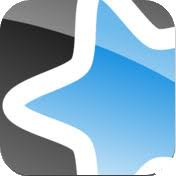Now you can download a lot of software for reciting words on the Internet. There are various apps on the mobile phone. Some of them are simple and easy to use. The interface is beautiful and pretty good. I'm not saying these apps are bad, but when I started memorizing words with an app called Anki many years ago, there weren't that many fancy apps.
Introduction
Anki's name comes from the Japanese word "暗记" (anki in Roman characters), which means memory. Its basic principle is a "flashcard" software. The prototype in real life is a small piece of paper with words written on the front and explanations written on the back.
The organization of information in Anki is like this:
"Words on the front, interpretations on the back" is one card, and "same interpretations on the front, same words on the back" is another card. The two related cards are a note. A stack of notes from the same subject is called a deck.
After downloading the computer version, the interface is like this, empty.
You can download decks shared by netizens. There are decks in various languages and fields, and you can find decks for learning Malay. You can go down to many Chinese-English CET-4, CET-6, TOEFL, IELTS, GRE word cards. Click "Get Shared". (Of course, in the cards shared by netizens, the language of instruction is mostly English.)
After downloading a set of flashcards from Anki's website, open them with Anki to learn.
If the word is very simple, just click "Easy" below and Anki will test you again in 4 days to see if you still remember it. If the word is difficult, click "Again" and Anki will test you again in a few minutes.
After seeing the word several times, Anki will calculate how long it will take you to test you next time based on your previous memory effect.
Pros
Besides arranging the rhythm of the review words according to the review effect plus the law of human memory, another reason I recommend Anki is that its function of manually adding and editing cards are powerful. In fact, you can add or delete anything, music, pictures, videos, etc. on both side of the card to create your own framework that fits your law of memory.
Cons
As I mentioned before, since all sources are from other individuals, there are some mistakes in the card sometimes.
Any more info
As a fresher to Anki, that is all you need to know. If you want to know exactly how to make a card, there is a video for you to keep studying.





Comments
Post a Comment